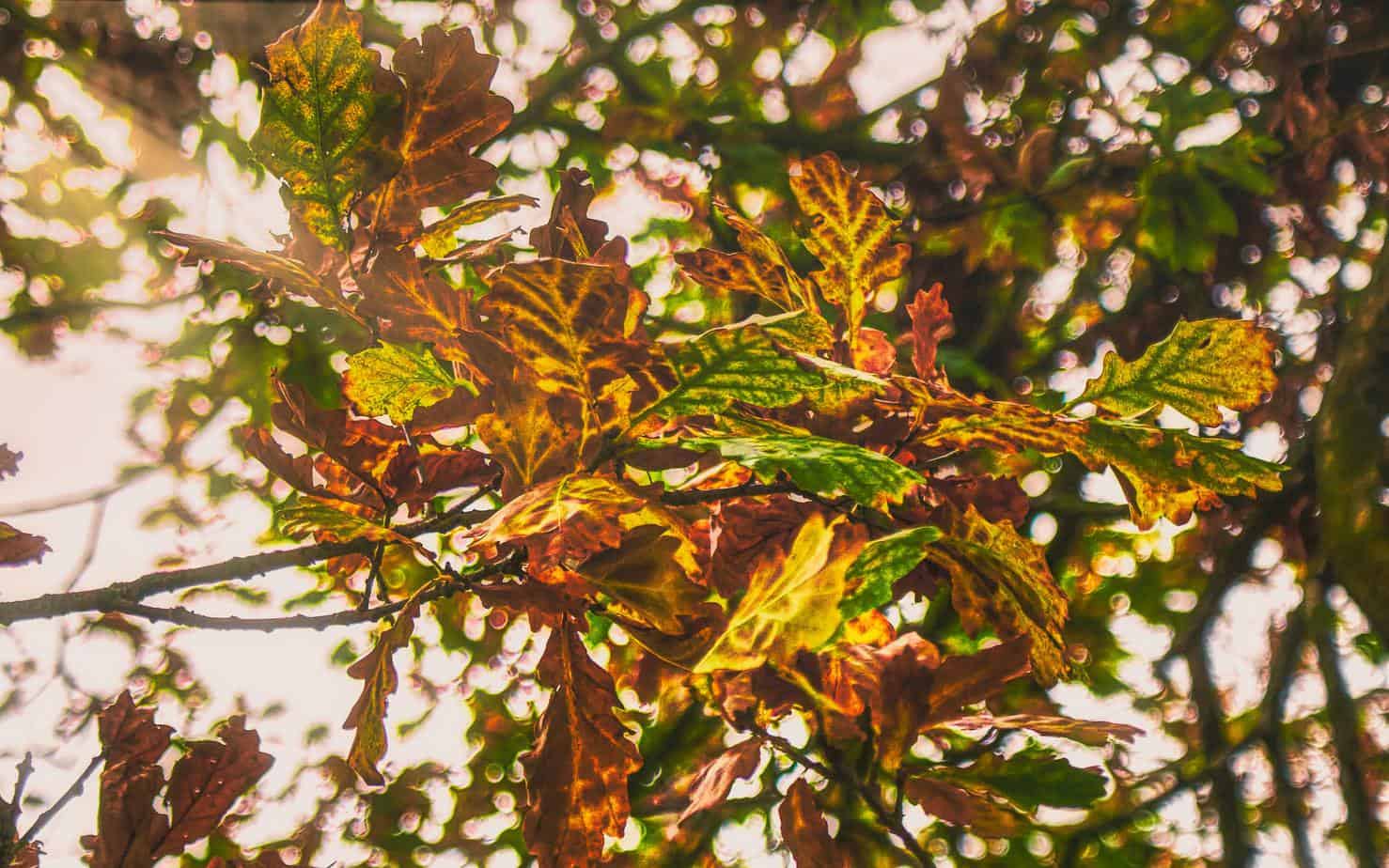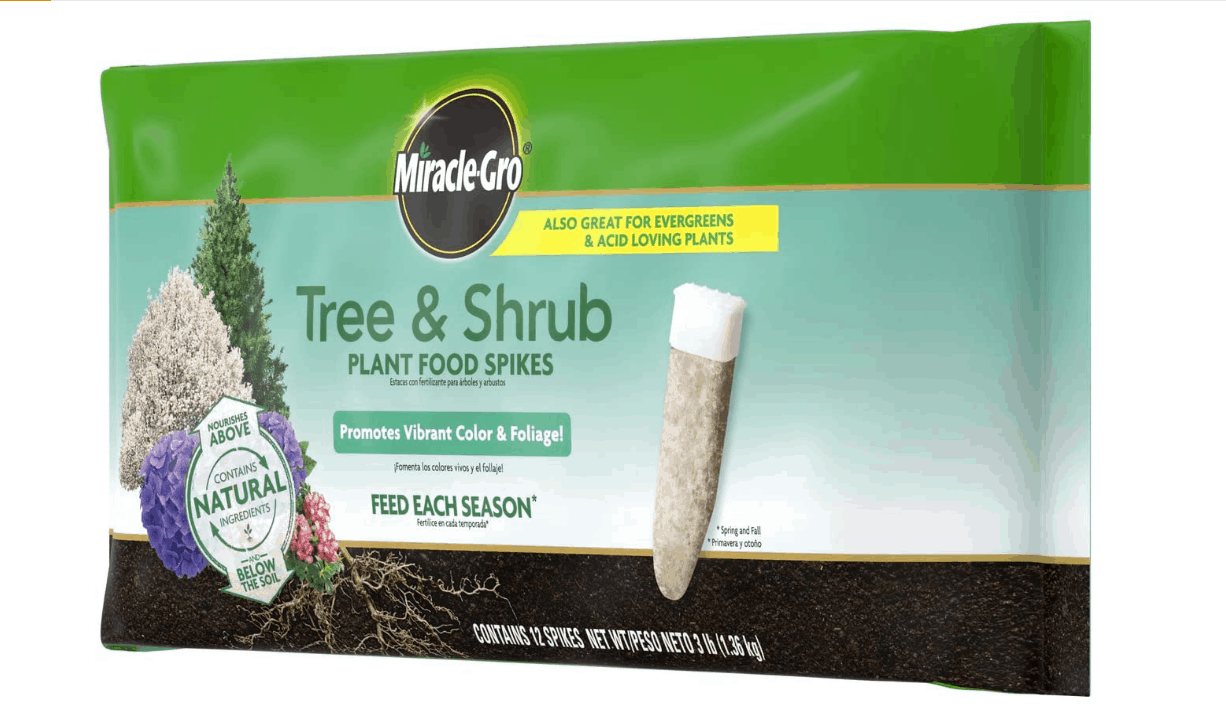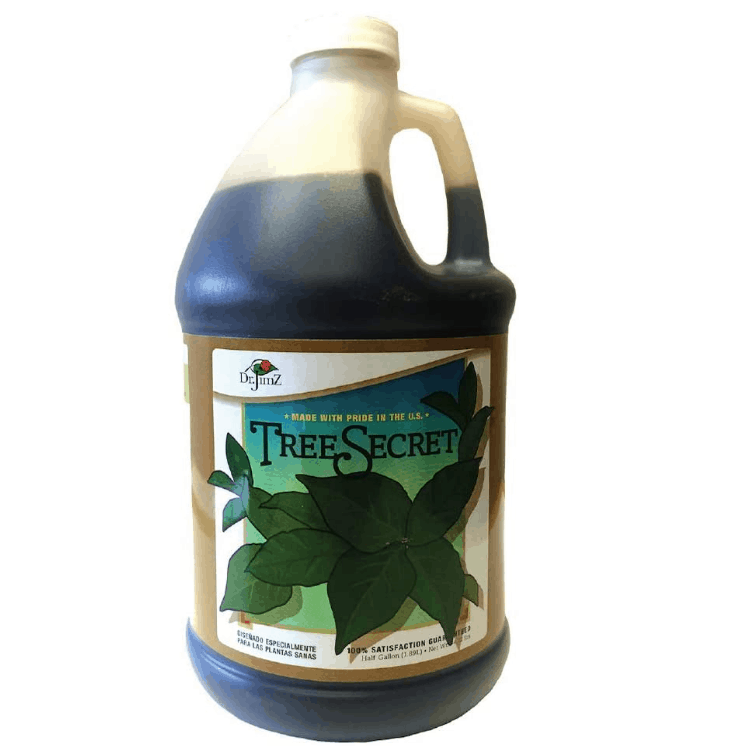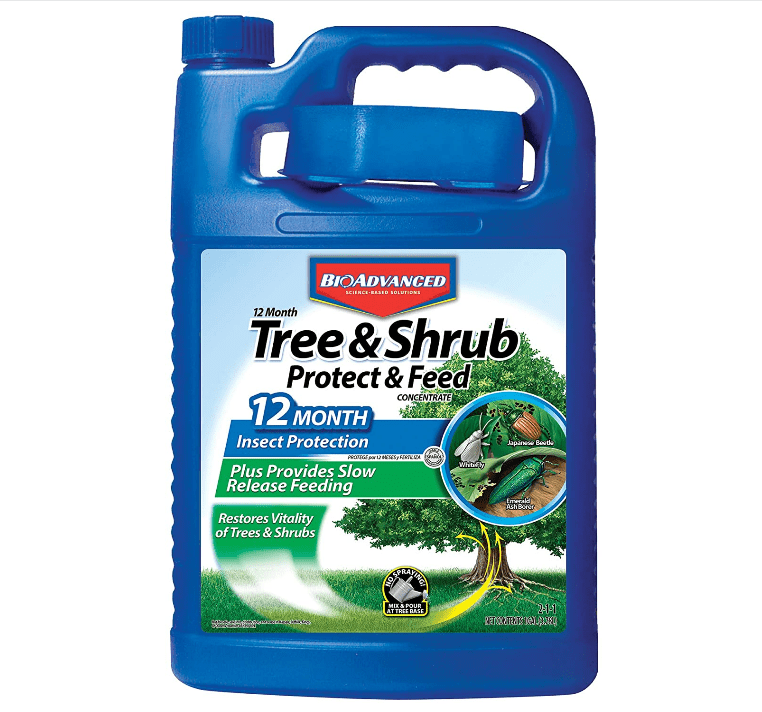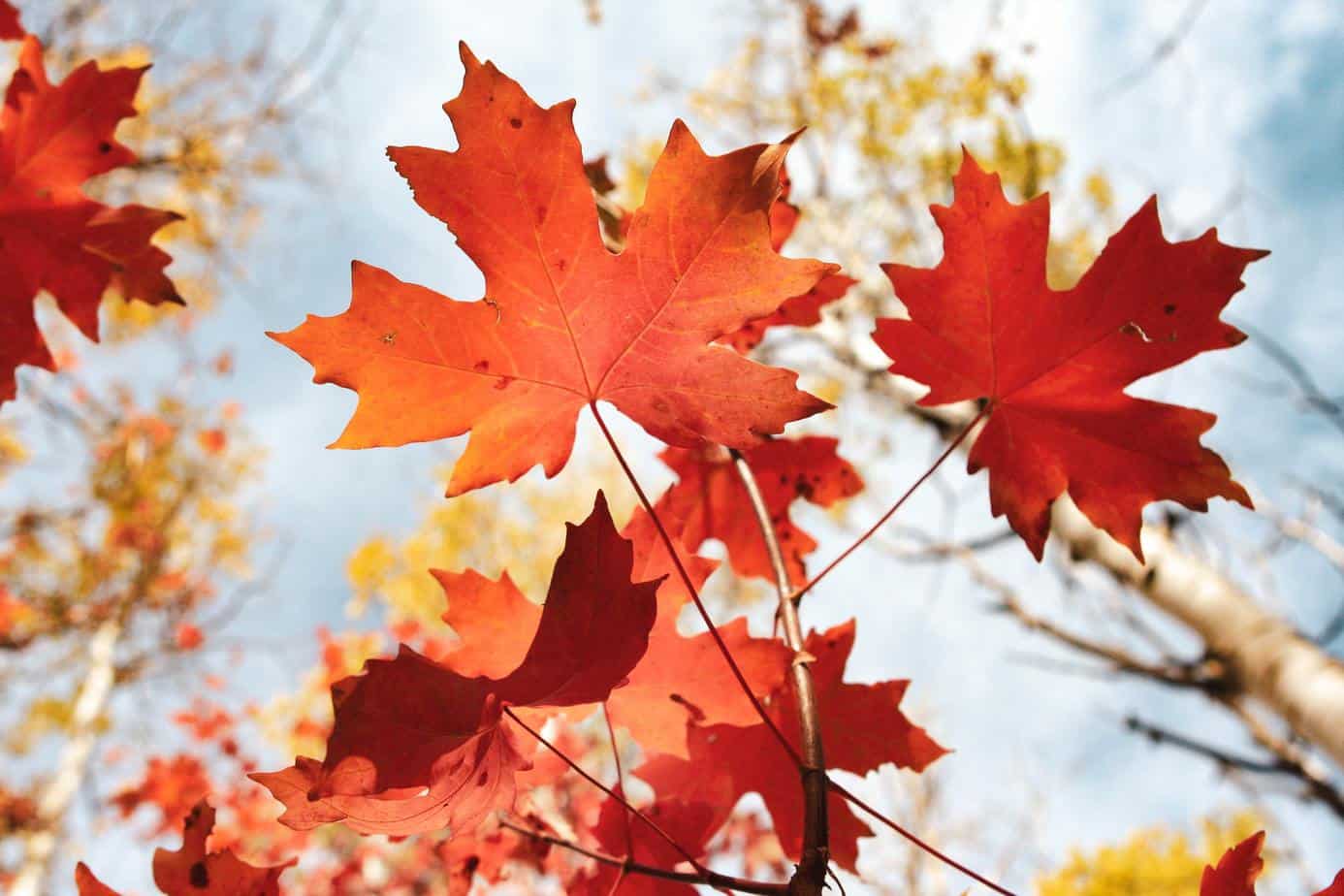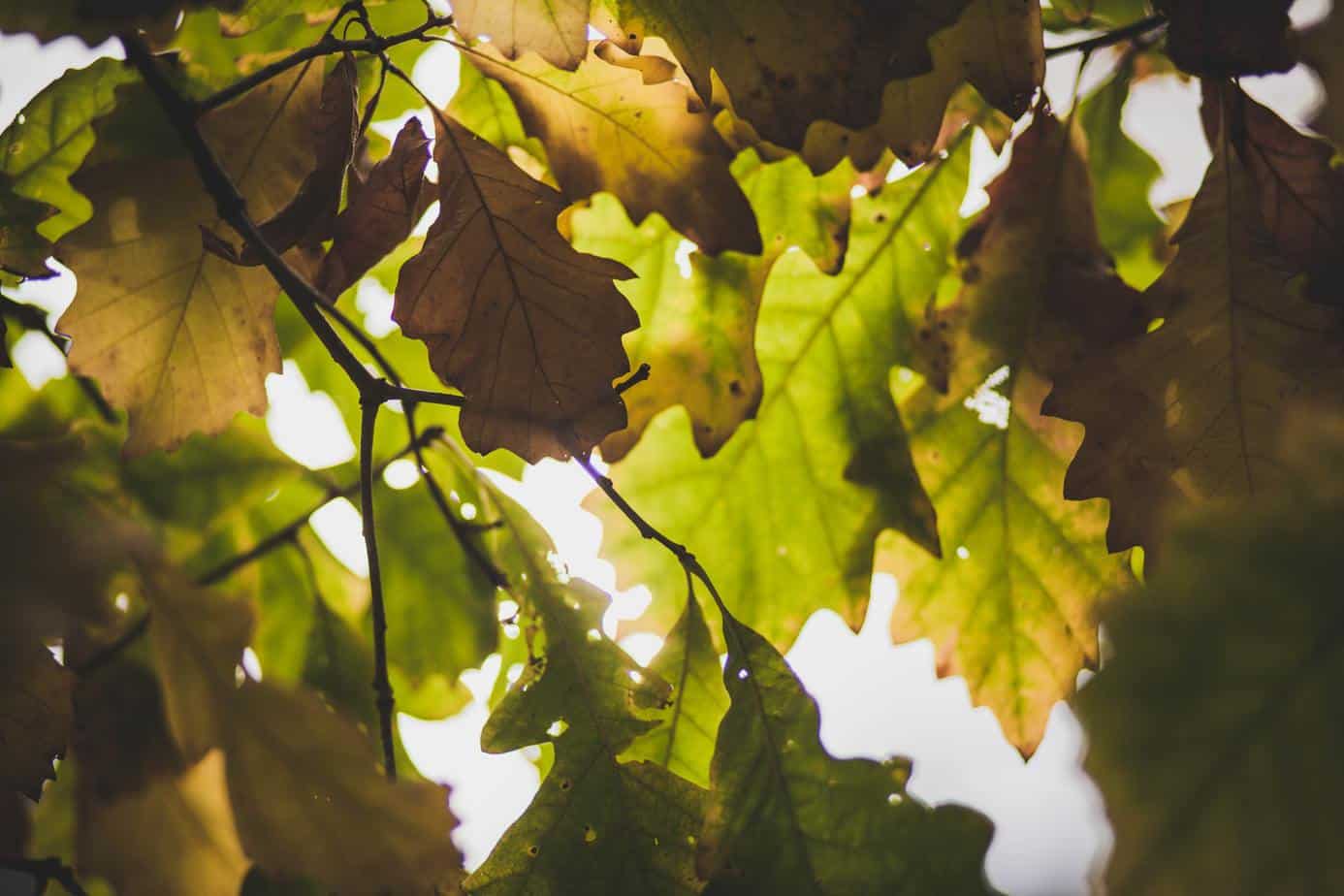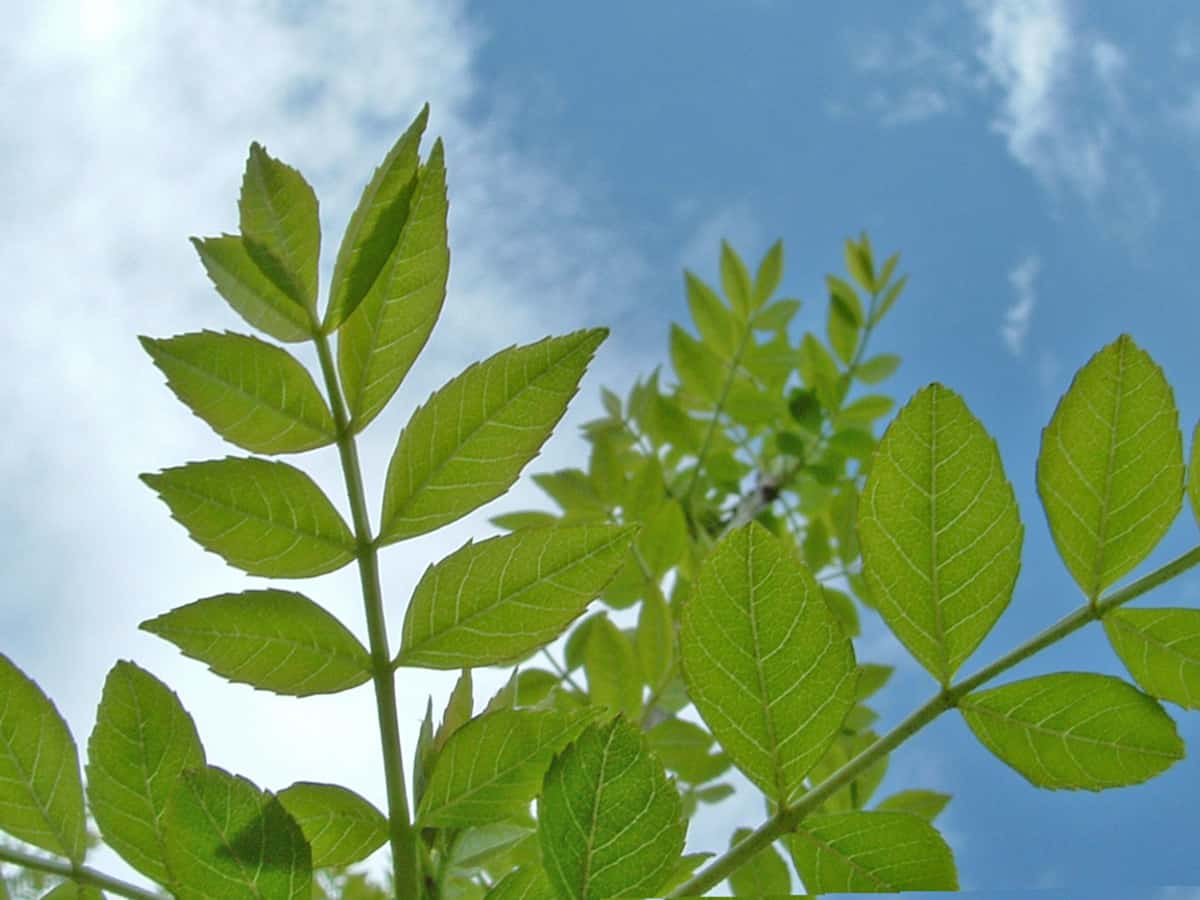- Majesty Palm Tree: How to Plant It and Keep It Alive - March 13, 2021
A deciduous tree sheds its leaves during autumn or when its growing season ends. According to the Oxford Learner’s Dictionary, the word comes from the Latin deciduus, which comes from decider or to fall off.
Deciduous trees are usually compared to evergreens. Deciduous shrubs, trees, and plants lose their leaves every year, while evergreens have foliage that stays green all year round. But this doesn’t mean that evergreens do not lose their leaves, but the turnover is slower. Deciduous trees often shed their leaves at the same time and once a year.
Types of Deciduous Trees
There are a lot of deciduous trees, but the most common are:
- Ash
- Aspen
- Beech
- Birch
- Maple
- Oak
- Poplar
- Walnut
- Willow
This page has a more exhaustive list of deciduous trees.
Why Do Deciduous Trees Lose Their Leaves?
For a tree that gets its food from photosynthesis happening in the leaves, you would think that the last thing they’d want to lose is their leaves.
However, losing their leaves is actually one way that these trees survive in the winter. For one, the leaves can be why some trees get blown over during the colder months. The leaves give the tree more surface area that catches the strong winds that can bring it down.
What’s more, having leaves during the months where the weather is windier can weigh down the tree as snow collects on the leaves.
Besides, the colder temperatures can destroy the leaves when it freezes the water inside them. Water expands as temperatures grow colder, and freezing temperatures can rupture the leaf cells. The leaves won’t be able to photosynthesize, but the tree is still wasting energy on keeping the foliage alive. Instead, it enters dormancy.
More than a way to save energy, deciduous trees can also remove the energy stored in the leaves and keep that elsewhere. When spring comes, the tree can direct the stored energy to regrow the leaves or do something else.
This video explains why deciduous trees shed their leaves.
Abscission
Deciduous trees perform abscission to shed their leaves. This process is a highly controlled task that starts with stopping chlorophyll production, so instead of being green, the leaves turn red and yellow.
The vessels that bring nutrients and water to the leaves are closed off, and the abscission layer grows between the leaf and the respective twig. The layer ensures that the tree will not have an open wound as the leaves die.
How to Identify Deciduous Trees
The primary way to identify deciduous trees is if they shed their leaves in the fall. The shedding should be drastic, and most, if not all, leaves fall at roughly the same time. Deciduous trees mostly have broad leaves, which is excellent for collecting sunlight but can also collect a lot of snow and become dangerous with higher winds during the winter.
However, there are exceptions. For instance, the Larix or larch trees have needles in clusters but are deciduous. Others on this list include the dawn redwood (Metasequoia glyptostroboides) and the bald cypress (Taxodium distichum).
Thin Cuticle and Flowers
Another identifying characteristic of deciduous trees is that their leaves do not have wax on them, and they have very thin cuticles. Leaves of deciduous trees can feel leathery to the touch.
Further, if the tree is flowering, which then becomes fruits and seeds, then there’s a good probability that it is deciduous.
Where Do Deciduous Trees Grow
Deciduous trees are mostly found in temperate and tropical climates. To get an idea of the ideal conditions needed for these trees to grow, let’s look at deciduous forests and monsoon forests. A deciduous forest has mostly broad-leaved trees that lose their leaves in one season, and these forests are found in the moderate latitudes between the latitudes 23°26’22” and 66°33’39” south and north of the equator.
This region includes the temperate and subtropical zones. However, a deciduous forest that grows in the tropical areas they are called monsoon forests.
You can often find basswoods, maples, birches, beeches, elms, oaks, and chestnuts in mid-latitude forests and can have dense growths that can block out light from getting to the forest floor. The smaller shrubs are relegated to forest edges and clearings because that’s where the light is.
Meanwhile, monsoon forests have woody vines, air plants, orchids, and other herbaceous epiphytes apart from the trees, such as teak, sal, and bamboo trees. The trees in monsoon forests lose their leaves during the dry season.
Uses of Deciduous Trees
Deciduous trees that grow close to rivers, streams, and other moist areas have root systems that prevent erosion and the washing away of the soil. Deciduous forests are also habitats for many animals, including bobcats, red fox, striped skunk, white-tailed deer, masked shrew, big brown bat, bullock oriole, great horned owl, and others.
Deciduous trees also like putting on a show every autumn, where they can cover the ground with brown, yellow, or red leaves. But these nature-related uses are just the icing on the cake because these trees do have practical uses.
For instance, they can be a good source of lumber used in house construction, furniture making, and flooring. Some are used as ornamental trees and can provide shade, as well.
Designing Your Garden
Some people make it a habit to go leaf-peeping in the fall. That’s when you travel to check out the astounding views as the leaves change colors.
But you don’t have to travel to see the spectacular color changes in nature. You can just plant deciduous trees in your yard. Here are our recommendations:
- Vine maple: The leaves can turn orangey, red, or yellow.
- Franklin tree: Treats you to white flowers during summertime and orange and red leaves in the fall.
- Washington hawthorn: gives you scarlet, purplish, and orange leaves with round red fruits that attract the birds and squirrels.
- Red oak: Displays crimson, russet, and oranges leaves, plus the animals love the acorns.
- Quaking Aspen: You’d love the round leaves that turn to orange or gold in the autumn.
- Sassafras: Bears fruits that can attract a wide variety of birds such as catbirds, bluebirds, and quail. Leaves turn all sorts of colors from purple, orange, red, and yellow.
- Sugar maple: The red leaves are iconic, as you can see it on the Canadian flag, as well as four states in the US.
How to Grow Deciduous Trees from Seed
When it comes to growing deciduous trees from seed, it will depend on what kind of trees you’re trying to grow. Most seeds from deciduous trees will need to undergo cold stratification.
Cold stratification requires you to put the seed in a moist and cold environment to get out of dormancy and germinate. Often, you will need to put it in potting mix with peat moss mixed in and then put it inside your refrigerator or some other cold place.
This video will show you the different ways to do this:
It is recommended that you put the germinated seeds and seedlings in a temporary container and let them grow a few inches before transplanting them to their permanent locations. To do this, you only have to dig just enough to cover the entire rootball with soil.
Deciduous Trees Growing Conditions
Most deciduous trees grow on well-balanced soil that is neither alkaline nor acidic. If you don’t want to make a mistake, it’s best to go with slightly-acidic soil to plant your trees in.
In deciduous forests where there is a wide variety of trees, the soil is slightly acidic and is classified as either brown or gray-brown podzols. These soils are well-draining with enough clay and organic material content that makes them good for growing plants and trees.
When to Plant Deciduous Trees
Left alone in nature, most deciduous trees have seeds getting into the ground in the fall. These seeds do not require pre-treatment or cold stratification, and yet they sprout new seedlings when spring comes.
However, you can have a more controlled and reliable germination for your tree seeds if you help them germinate. Putting them in the refrigerator in a blanket of peat and potting mix or a simple wet paper towel can help ensure that you’d have enough seedlings.
You can control the temperature inside the home and have them grow a bit before putting them outside. And all these can happen anytime.
However, that will involve a lot of work. For most deciduous trees, it’s still best to get them to break their dormancy in the fall, treat them with a moist and cold environment, and transplant them in the spring.
In this manner, you can give them the best growing conditions without too much work.
How to Plant Deciduous Trees
Once you have the seedlings growing up to a few inches, you can transplant them outdoors. Just dig a hole that’s deep enough to accommodate the entire rootball. Most deciduous trees do not like being planted deep into the ground as it may cause root rot.
Deciduous Trees Water Requirements
According to this site, trees need the soil to be moist to be healthy and grow well. The moist soil also allows it to resist insects and avoid winter injury. Proper watering will also help deciduous trees to bloom and produce fruit.
However, the soil cannot be too wet. Waterlogged deciduous trees are not healthy. How much water to give your tree depends on what season it is. When spring starts and through August, gives trees good watering.
But hold back on the amount of water you give them in September to the middle of October to avoid damaging them from early frost and snowstorms.
By the middle of November, give your trees a deep watering to ensure that the roots are saturated. Doing so can help your tree fight winter kill.
You should not overwater your deciduous trees when they are actively growing. Give the soil around 12 inches (30.5 centimeters) of water over the entire root area. When the tree is in dormancy, you will still need to water it, but at a reduced rate at around 2.5 to 3 gallons (9.5 to 11.4 liters) every week for a tree around six to eight feet (1.8 to 2.4 meters) tall.
More Tips:
- If you want to save water, you can create a berm around your deciduous trees. The artificial ridge will keep the water in and give the roots more moisture.
- You can give the soil a layer of mulch to reduce evaporation.
- Do not water the leaves of deciduous trees, which can encourage mildew, blight, or rust.
- Some deciduous trees, such as the ash tree, may be sensitive to overwatering.
Deciduous Trees Sun Requirements
Most deciduous trees need full sun to be healthy, grow as much as possible, and thrive. However, some varieties can tolerate full or partial shade. Deciduous trees that can tolerate full shade include the smaller trees such as the Japanese angelica tree and silky camellia.
The Japanese coral bark maple, silver birch, Himalayan birch, Chinese dogwood, ghost tree, and mountain ash can all tolerate partial shade.
Best Deciduous Trees Fertilizer
When fertilizing, you can treat deciduous trees the same way you fertilize evergreens. You will want to give your trees a fertilizer with nitrogen to phosphorus to potassium ratio of 2-1-1. Trees need more nitrogen than any other nutrient, and they can often grow slowly or become stunted when they don’t get enough fertilizers.
1. Miracle-Gro Tree & Shrub Plant Food Spikes
This product has 12 spikes in the package and helps your trees have lush and vibrant foliage. It uses only natural ingredients. It’s easy to use, where you drive the spikes into the wet ground. You should place the spikes along the drip line, away from the trunk of your tree.
And it’s not just for deciduous trees. You can also use these spikes for shrubs, evergreens, and bushes. However, some users caution others about using these spikes on young trees, and it may cause fertilizer burn.
This fertilizer has an NPK ratio of 15-5-10
2. Dr. JimZ Tree Secret Fertilizer
The Dr. Jim Tree Secret Fertilizer has an NPK ratio of 4-1-3. This product is specially formulated to make your trees stronger and healthier. What’s more, this organic product plies the soil with readily available nutrients that your tree can use. It also doesn’t leach into the ground and doesn’t wash away.
This product promises that your tree will not only become stronger by growing at the right pace, but it will also have fewer diseases and insects.
Customers are thrilled that this product worked as advertised. But some do say that you’d need a lot of this product even for one medium-sized tree.
3. BioAdvanced 701915A 12 Month Tree and Shrub Feed Fertilizer with Insect Protection
The BioAdvanced 701915A 12 Month Tree and Shrub Feed Fertilizer with Insect Protection are for those who might not like spending a lot of time fertilizing their tree. With this product, you only have to apply it once a year, and you’d have a healthy and thriving tree and fewer bugs.
This product not only gives your tree the nutrients it needs, but it actively kills pests and insects such as Japanese beetles, adelgids, emerald ash borers, aphids, and leafminers, among many others.
The slow-release formula gives systemic protection for your trees, meaning everything from roots to leaves is protected.
How to Grow Deciduous Trees: Some Examples
To make it easier to remember, it might help to know how some of the more famous deciduous trees are grown from seeds and how to take care of them.
Maple
Most varieties require you to treat the seeds with cold stratification. Put the seeds around 0.75 inches (two centimeters) in moist peat moss to help the seed germinate.
Place it inside the refrigerator for two to three months and wait for the seeds to germinate. Transplant the germinated seeds in good quality potting soil growing them up to they are a few inches in height
Plant outdoors, ideally in the fall or just about any time when the ground isn’t frozen. The ideal location for a maple tree gets full sun or partial shade. Maple also loves well-draining soil.
Dig a hole that will accommodate the container you used to grow the seedling. Careful not to bury the seedling too deeply to avoid root rot.
Only fertilize the tree after two spring seasons have passed after you planted it.
Fertilize with composted manure or 10-10-10 fertilizer.
Oak
Gather mature acorns as soon as they fall from the tree and choose only viable acorns that are not damaged or empty. To know which acorns are viable, put them in water and get the ones that sink.
Some varieties of oak, such as the swamp white oak and white oak, must be planted in the fall. This way, the seeds germinate right after you sow them.
For others, you will need to do some cold stratification on them by putting them in a mixture with sand and peat moss and then putting the container in the refrigerator for anywhere from 30 to 60 days.
When it’s time to plant, put the seeds anywhere from 0.5 to an inch (1.3 to 2.5 centimeters) deep in an area where you can care for them for a year or two before they get transplanted to their permanent place.
Oak trees are not picky and can thrive anywhere with full sun or in almost complete shade. It can also survive in sandy or rich soil.
Ash Tree
There are a few things that the ash tree requires to thrive: pH-balanced soil, full sun, and lots of space. For the seeds to germinate, you will need to soak them in cold water for 24 hours. Change the water and repeat the process. You will need well-draining soil to plant the seeds and wait for around 18 months for them to mature and sprout.
Best Deciduous Trees Companion Plantings
Finding the right companion plant for your deciduous trees can be a challenge because these trees can steal a whole lot of nutrients from the soil and block out most of the sun until they shed their leaves.
However, for those who might like to have some sort of contrast for their trees, you should sow companion plants between the drip line and your tree’s trunk. What’s more, companion plants will need more support: more organic matter, lots of water, and a slow-release fertilizer.
You can rely on the following plants:
- Medium-sized shrubs or herbs that are not flowering
- Woodland perennials
- Bulbs
- Plants with glossy leaves, such as Viburnum davidii, variegated Euonymus fortunei, Aucuba japonica
- Ivy varieties with small leaves such as Asarum, as well as pulmonarias and lungworts
- Ground cover
Deciduous Trees Diseases and Common Problems
Several problems can plague deciduous trees. Here are the most common.
Insects
Some insects are readily seen, but some can be tiny that you can’t see them. For these invisible insects, you know they’re there because of the discolored leaves and the spots that they cause on the twigs or leaves.
- Aphids can infest the underside of leaves or young shoots. They can cause the foliage to turn yellow and even curl up.
- Scale insects can be seen as bumps on the leaves or stems. These can also become sticky and shiny because of the sugar being excreted by these insects.
- Galls can be caused by insects as well and are exhibited as swelling or growths on leaves.
- Bark beetles, root-feeding weevil larvae, termite, and nematodes are also very common problems in trees. These can cause your tree to die.
- Leafhoppers can leave the leaves stippled, dull, and dry after they suck the plant sap.
- Meanwhile, bagworms chew on the leaves of some deciduous trees. Borers are the larvae of insects such as caterpillars, sawflies, and beetles/ Borers can kill twigs and weaken your tree in some cases.
Diseases
Some deciduous trees are prone to diseases such as leaf spots that are mostly harmless to the plant but can make it uglier than it should. Same thing with powdery mildew, which can leave a light-colored layer of a powder-like substance on leaves.
Iron chlorosis can cause premature yellowing on deciduous trees. Newer leaves also exhibit a pale shade of green. This disease results from the lack of iron and is seen in most trees that need more acidic soil to survive.
Some viruses can kill deciduous trees, such as the ash yellows that can affect ash trees.
Environmental Problems
Deciduous trees can sometimes have deformed leaves because of damage from herbicides or fertilizers that you use. Moreover, intense sunlight may scorch these trees if the sun is too intense.
You should also be wary of winter dieback caused by the lower temperatures.
Deciduous Trees Treatments and Maintenance
You already know that deciduous trees need fertilizers to make them stronger and ward off harmful insects. But it also needs pruning and mulching.
Pruning deciduous trees like oaks can help control their size, which is important if you’re using the tree as part of your landscape. You can also get rid of diseased or dead branches while also encouraging the development of buds.
You should also consider putting mulch on the grown, which would keep the water from evaporating rapidly. Mulch will help keep the soil moist even during the hot summer months.
This video will help you learn how to properly prune deciduous trees:
How to Remove Deciduous Trees
Before anything, did you know that estimates say that 15.3 billion trees are chopped down every year? Think twice about cutting that tree as there are several environmental effects that you will want to avoid, including soil erosion, less buffer for pollution, and other negative impacts.
Also, because these trees can get large, you will need a lot of time, the use of a chainsaw, and know what you’re doing to succeed. If you haven’t experienced cutting down a tree before, you might as well leave it to the professionals.
If you want to do it yourself, you can check out this video to learn just how to safely cut deciduous trees.
Where to Buy Deciduous Trees Seeds Online
If you plan on planting a deciduous forest on your property or just looking for a particular type of tree, you can rely on these online retailers to get the seeds you need.
1. TreeSeeds.com
TreeSeeds.com offers you an affordable way to get seeds. They have packs of anywhere from 25 to 1,000 seeds, so you can choose according to how many trees you plan to have on your property. They have a wide variety of seeds that you can buy, including these Japanese snowbell tree seeds that ship in 24 hours.
Apart from providing you with the seeds themselves, the site has a collection of growing guides to help beginners succeed in germinating and sprouting these seeds. However, you should know that the company has been receiving complaints that orders were not delivered.
2. The Incredible Seeds Co.
This company makes it easier for you to get the deciduous tree seeds that you need. The selection may be limited depending on the time of the year you order. This company is run by a husband and wife team and promises to give you sustainable seeds.
3. Seedman.com
If you’re looking for rare or unusual tree seeds, you can check out the catalog at Seedman.com. Check out their selection of oak tree seeds from all around the world. Or perhaps you’d be more interested in the different varieties of maple that they have in stock.
The company has mostly positive reviews.
4. TreeHelp.com
This site sells tree care products, including care kits, tools, books, accessories, and other offerings. They also sell seeds.
The selection is limited, but you have somebody you can trust with 20 years of experience.
5. Sheffield’s Seed Company
The Sheffield’s Seed Company has been around for more than four decades. They have their seeds neatly categorized, so it’s easier for you to choose which ones to buy.
You will love how they include information on the seeds they sell, including sun, watering, and sowing instructions.
Where to Buy Deciduous Trees Saplings Online
There are situations when you just don’t have the patience or the time to wait for your deciduous trees to grow from seeds. Saplings might be a better idea if you’re impatient or if you want to skip the tricky germination process. Where can you guy deciduous tree saplings online?
1. Amazon
Amazon has some sellers that offer deciduous tree saplings that you can immediately plant after receiving. This Florida native oak tree sapling and this Japanese maple tree show you the quality of seedlings you can find on the giant online retailer.
2. Arbor Day Foundation Store
What better way to get tree saplings and help at the same time than to buy from the Arbor Day Foundation? This site has a lot of resources that allow you to get the best trees for your property, including a tree finder wizard that tells you what trees are perfect for you depending on several factors.
If you can’t decide which deciduous trees you want, you can opt for the autumn color collection. This set will give you five trees with distinctive fall colors.
The organization also offers tree seedlings in bulk, allowing you to get 50 saplings of the tree of your choice for a little over $1 each.
3. Tennessee Wholesale Nursery
This site has quite a collection of deciduous trees that you can choose from, including the tulip poplar tree, oak trees, sweetgum, river birch tree, and white dogwood tree.
So you can just buy the seeds that you want so you can enjoy different colors right in your own backyard.
4. Tree Seedlings
This site will give you healthy deciduous trees such as the black walnut, red oak, shagbark hickory, and others. The selection is quite limited, but these might be the ideal trees for you. They ship them bare root.
5. Ferguson Tree Nursery
This Canadian retailer offers several deciduous trees that you can get bare root or potted. You can even choose the age of the seedlings and the size.
That means this is the place to buy your seedlings from if you want bigger seedlings that lessens waiting.
There are a few options, and most of them sell out fast, but it’s worth checking.
Frequently Asked Questions
We know that you have a lot of questions about deciduous trees. So here are some of them answered!
1. Question: I’m interested in leaf-peeping. Where can I go?
Answer: You’re not the only one who likes to see nature change its colors. You can even make a trip out of it and enjoy the outdoors with the best views all around. Some of the places you can go:
- Bar Harbor, Maine – Salty sea air and Acadia National Park with flaming trees as the background.
- Catskills Mountains, New York – Beautiful sceneries all year round, but it magically turns red, orange, and yellow in the fall.
- Columbia River Gorge, Oregon – With more than 50 waterfalls, you can bike and hike among the lovely fall colors here.
- Okanogan-Wenatchee National Forest, Washington – A mid-October visit will give you an astounding backdrop of fall foliage, which accentuates just how beautiful this place is.
- Ozark National Forest, Arkansas – Visit in October, when the foliage is at its peak.
- Stowe, Vermont – They call this place the color capital of fall, and you will see why when you visit from September to the middle of October.
These are just a sampling of places you can go to for a little leaf-peeping. If you have a favorite park or city for leaf-peeping, comment it down below.
2. Question: What substances give leaves their colors?
Answer: When it’s autumn, deciduous trees cut the nutrients and water that goes to the leaves, and the chlorophyll in them breaks down. Chlorophyll gives leaves their green color. When it goes away, the other colors show through.
Carotenoids give leaves their yellow color. This substance protects the chlorophyll from oxidation and can also absorb energy from sunlight.
Anthocyanins are responsible for the red colors on leaves. This stuff is also the same substance that colors the skin of ripe apples and grapes.
3. Question: What should you do with all the leaves that fall off deciduous trees?
Answer: There is no question how beautiful it is when a deciduous tree changes color. But when these leaves start to fall, it can be a nuisance or a safety hazard. It can block drains or become slippery when it gets wet.
So what should you do about these fallen leaves?
- Mow on them. If the leaves fall on your lawn, you can mow on these leaves so that they are cut into smaller pieces, and your lawn can use them as a soil conditioner.
- Throw them into your compost bin. These can be used as brown material for that compost bin.
- Use it as leaf mulch. Shred the leaves using a rotary mower and put the cut-up leaves on your flower beds or around your plants.
- Insulation. You can use these leaves to warm up your garden shed in the winter. Bag them up and pack them together in one area of your garden shed to keep the entire place warmer.
Everything You Need to Know About Deciduous Trees
Deciduous trees can elicit wonder. During the spring and summer, they grow and then provide you with shade from the harsh sun. Some bloom, and others even have fruits. They become habitats for several animals. Then as autumn nears, their colors change before they fall to the ground.
You can now plant deciduous trees on your property, and we have already guided you through the basics. Be sure, however, that you look up specific care guides for the tree that you intend you plant.
Recommended Reads:
- Almond Tree: How To Care For It, And When To Expect The First Almonds
- Russian Olive Tree: How Long It Takes To Grow Olives?
Sources
- Amazon: BioAdvanced 701915A 12 Month Tree and Shrub Feed Fertilizer with Insect Protection
- Amazon: Miracle-Gro Tree & Shrub Plant Food Spikes, 12 Spikes/Pack
- Amazon: Tree Fertilizer, Tree Secret 64oz, Save Your Dying Tree, All Natural, Bioavailable, Loaded with Nutrients, Works On All Trees!
- Arbor Day Foundation: Best Tree Finder Wizard
- Audubon.org: Deciduous Forest Ecosystem Flashcards
- Biology Dictionary: Deciduous Trees
- Britannica.com: Deciduous Forest
- Britannica.com: Monsoon Forest
- Britannica.com: Monsoon Forest
- Dave’s Garden: The scoop on ‘Tree Seeds (aka treeseeds.com)’
- Ferguson Tree Nursery: Deciduous
- Garden Design: Get Colorful Fall Foliage with These Trees
- Institute of Agriculture and Natural Resources at the University of Nebraska – Lincoln: Watering Tips for Trees and Shrubs
- Iowa State University Extension and Outreach: You are here Yard and Garden: Handling, Germinating and Planting Acorns
- National Park Service: Leaf Peeping
- Oxford Learner’s Dictionary: Deciduous
- Seedman.com: Oak
- Seedman: Acer
- SFGate Home Guides: Caring for, Pruning, and Fertilizing an Oak Tree Landscape
- Sheffield’s Seed Company: Deciduous Seeds for Sale
- Somerville Seedlings: Deciduous
- Tennessee Wholesale Nursery: Deciduous Trees
- The Incredible Seed Co.: Deciduous Trees
- Tree-Guide.com Deciduous Tree
- TreeHelp.com: Home page
- TreeHelp.com: How to Grow a Tree or Shrub from Seed
- TreeSeeds.com: Home page
- University of Missouri Extension: Fertilizing Shade Trees
- Wikipedia: Middle Latitudes
- YouTube: 5 Ways to Cold Stratify Seeds | Plus Easy Seed Scarification Technique!
- YouTube: A colorful guide to New England’s autumn leaves
- YouTube: Cutting Down Dangerous Trees – Professional Advice
- YouTube: Prune Deciduous Trees
- YouTube: The experts on removing big trees
- YouTube: Why Do Trees Lose Their Leaves In Autumn?

